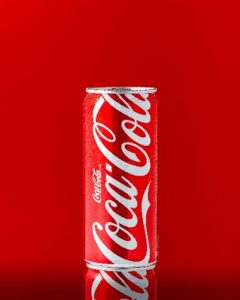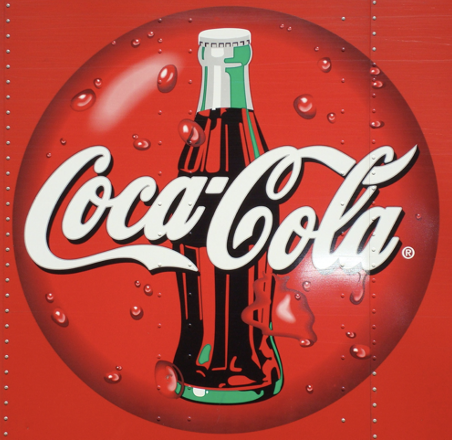How well can you keep a secret? How about a secret that has been around for over a century and is one of the most sought after secrets in the world? Well, that’s the challenge for those who know the world-famous secret formula of the original Coca-Cola, better known as Coke. The company protects the formula by shrouding it in a great amount of secrecy. But, how did this formula come to be and how it is protected under intellectual property law?
The History of the Formula

There are some variations of how the story of the formula goes but the company has its own version of it. The drink’s original inventor John Pemberton created the drink in 1886 and had shared the recipe with only a couple of people before his death in 1888. Coke’s original founder Asa Candler purchased the rights in 1891 and made a few changes to it. The recipe, however, would not be written down until 1919. It had originally just been passed down by word of mouth. Then, in 1919, a group of investors led by Ernest Woodruff took out a loan to purchase the company and he needed collateral for the loan. Coke gave him a written version of the formula to use as such.
From that time on, the document was guarded in an Atlanta bank for many years. Eventually, Coke decided to create a marketing strategy centered around its secret formula, hoping the shroud of mystery around the formula would generate attention to their products. Coke further added to this mysteriousness by building an entire vault in 1995 within the World of Coca-Cola, the company’s museum in Atlanta. Coke also claims that only two senior executives within the company know the formula at a time and they can never travel together.
The vault itself is of an intricate design coupled with high-tech security features. It is only accessible via a palm scanner, a numerical code pad and a huge steel door. Once inside, there’s another safe box with more security features. And inside that safe box is a metal case containing the written recipe. The company even completed the vault with red lighting and fake smoke.
Now, it’s important to take all of this with a grain of salt as this information is based on Coke’s own claims. Some have called into question whether it is only really two senior executives at a time that know the formula. They have also questioned whether the formula was not written until 1919. Ultimately, this all comes from an elaborate marketing campaign manufactured by Coke.
How is the Coke Formula Legally Protected?
Regardless of the truthfulness of the claims or lack thereof, the company makes serious efforts to keep the formula secret. In doing so, Coke has created a form of IP called a trade secret. A trade secret has three components to it. First, a trade secret contains information that has either actual or potential independent economic value by virtue of not being generally known. In this case, “economic value” is how the secrecy of Coke’s formula keeps competitors from copying it. Second, a trade secret has value to others who cannot legitimately obtain the information. Lastly, a trade secret is subject to reasonable efforts to maintain its secrecy.
As long as Coke can keep the formula reasonably secret, then the trade secret protection can last forever. The information does not have to be entirely secret, meaning that more people beyond just two senior executives at Coke can know the formula. Ultimately, the trade secret protection depends on the effectiveness of the processes Coke is using to keep its formula secret.
Choice of Trade Secret vs. Patent
Why would Coke opt to use a trade secret rather than a patent? After all, patents are the form of IP often used to protect inventions. If a trade secret only lasts as long as the IP can remain secret, it may seem to make more sense to get a patent because a patent grants its owner the right to exclude all others from the invention. Well, for one, a U.S. patent only lasts for less than 20 years to be exact. Whereas trade secrets could technically last forever.
But, in Coke’s case, there is an even more important reason. In order to be granted a patent from the U.S. Patent and Trademark Office (USPTO), an applicant has to fully disclose what exactly it wants protected. This means that Coke would have to disclose its closely guarded formula, thus opening itself up to competitors copying the recipe. Coke ultimately does want to do that. And that’s why it has opted to protect the formula as a trade secret.
How to Protect the Formula as a Trade Secret
How exactly can Coke protect its trade secret? Well, as previously mentioned, it can and must use reasonable efforts to maintain the secrecy of the formula. But what if the information becomes generally known? If the information had been legitimately obtained, then the trade secret is essentially “cancelled” and the information cannot be protected anymore as a trade secret. An example is if someone were to experiment on a Coke can and independently discover the formula.
Now, if someone were to improperly obtain the information, that would be what is called misappropriation of a trade secret. Such examples of improperly obtaining information include breaches of nondisclosure agreements, industrial espionage, theft, fraud, and bribery. The trade secret owner has a right to sue another party for misappropriation and can ask for money damages, equitable relief such as an injunction stopping disclosure of the trade secret, and costs for litigating the claim. However, the information can still lose its trade secret status if the information becomes generally known even though it was illegally obtained.
Thus, it is incredibly important that Coke uses its best efforts to guard the secrecy of its recipe. Even if the story about the two senior executives is not exactly true, Coke still uses other processes to limit the dissemination of the formula in order to keep the trade secret status on its formula. It would still have to keep the amount of people who know the true formula to a minimum and likely have the employees who do learn about the formula to sign non-disclosure agreements. Ultimately, Coke won’t divulge how exactly it keeps the formula secret. But considering Coke has successfully kept the formula secret for decades, it is safe to say that the methods they are using are working.
The Future of the Secret Coke Formula
Many have tried before to guess what the secret formula is. An author and a radio host, Mark Pendergrast and Ira Glass, have even claimed to have found the original Pemberton recipe and made it public. Coke has denied these recipes are the real deal and they may be telling the truth since Pemberton’s recipe had been changed by Asa Candler.
In the end, no one seems to have cracked the true formula and it is uncertain whether it ever will be discovered. The recipe remains one of the most closely guarded secrets in the world. Considering how valuable it is to Coke, it is likely that it will remain that way. Coke has no intention of letting go of its most precious trade secret and the key to its success. Until then, maybe go grab a Coke and enjoy its refreshing flavor.

Brendan Zdunek
Associate Blogger
Loyola University Chicago JD ‘23
